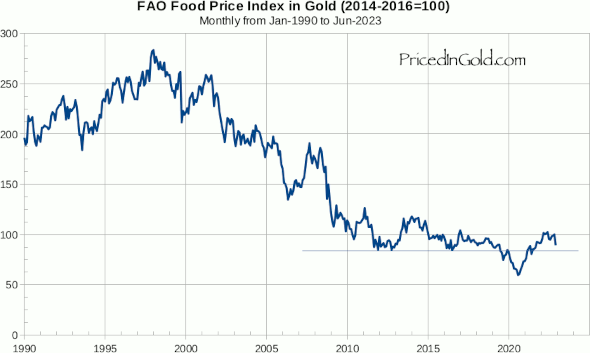Sprott's Thoughts
Friday, January 31, 2014
Henry Bonner
“Gold Price Going Up or Mines Will Close” Within 6 Months: Steve Todoruk
“After three painful years in gold prices and related stocks, have we hit the bottom? Will they head higher?” Steve Todoruk began a recent letter to his clients at Sprott Global Resource Investments Ltd. with these pressing questions.
His take is that either the metals will start going up in the next six months, or the big mining companies will have to close down a lot of their operations. That, in turn, could squeeze supply, initiating another long-term up move, but at a high cost to the producers.
So where are we headed next for precious metals and mining companies?
Big miners hesitate to cut production
“It all starts with the major mining companies,” says Steve. “These companies take on tremendous risk, along with their shareholders, in operating mines. Upfront infrastructure costs typically range in the billions and it takes years to permit and build them.”
Because of the long lifetime of a major mine – which can span several decades – miners must allow sufficient margin for their production to remain profitable over its lifetime. If prices crash and they lack the ability to maintain a margin, they might never generate sufficient return to get their money back.
There is also the risk of higher costs to produce the metals, through higher labor or equipment costs, for instance. Thus, as Steve says, “mines must make strong profits, because the more marginal the mine, the higher the risk that it could end up losing money.”
Because of these big upfront expenses, mining firms are highly reluctant to halt operations if they can avoid it. So they might keep a mine that is no longer making money -- or even losing some -- in production for a while.
“It is not a simple thing to shut down a mine,” he says. “You have to lay off all the miners, who may be under contractual obligations and part of a union. A lot of mines lease those big yellow mining trucks and shovels. The company will have to pay a lot of money to send all that equipment back to its owner.”
Even then, there would still be expenses associated with the non-productive mine. “With a lot of expensive equipment and infrastructure still at the mine site, they will have to keep some employees there for ‘care and maintenance’ in the hope that metal prices will rise at some point and they can re-open the mine.
"If they do re-start the mine, then they would have to re-hire all of the miners and bring back those trucks and shovels,” Steve explains.
All of these factors will cause a mine to run at a loss for a little while. But not for a long time.
“My guess is that mining companies will shut down money-losing operations in less than a year and maybe closer to six months,” says Steve.
What the miners are doing now: High-grading
There are a number of big mines in operation today whose average grade is unremarkable according to Steve, but contain areas of high-grade ore.
Mining only these higher-grade sections could boost profits in the near term, but damage the economics of the mine over its mine life (we have discussed ‘high-grading’ here and here).
Companies will ‘high-grade’ their mines in order to demonstrate profitability to their shareholders, but as Steve explains, this can only work for so long.
“If metals prices stay low and the company gets to the point where they have mined all of the high grade, their only choice is to go back to mining the lower grade mineralization (if they have not already wrecked the overall mine plan), which is a money-losing proposition,” he says.
“When the mine gets to this point, the likely action is to shut it down. If lots of mines get to this point, then lots of mines start shutting down,” he warns.
Deep cuts to future production
Before closing down mines, the first step that big miners take is to delay new developments. Today, many projects are being put on hold, says Steve. These projects looked good at high metals prices, but the big miners have less money to spend and the economics are less attractive now.
“For instance, New Gold Corp. just announced that two of their planned new gold mines in Canada are uneconomic at today’s gold price. Therefore, it is highly likely that the company will cease plans of bringing them through to production for now,” says Steve.
“If we get to the point where lots of mines are closing, then simple supply and demand fundamentals will start kicking in; buyers will have to pay enough for the metals that the mining companies can turn a profit producing them. So we will either see lots of mines shutting down or gold prices going up, allowing mining operations to run at a profit.
“We are about six months into a low gold-price environment. That means something has got to give sometime in the next six months,” he concludes.
Steve Todoruk worked as a field geologist for major and junior mining exploration companies after he graduated with a B. Sc. in Geology from the University of British Columbia, in 1985. Steve joined Sprott Global Resource Investments Ltd. in 2003 as a Senior Investment Executive. To contact Steve, e-mail him at
stodoruk@sprottglobal.com or call him at 1.800.477.7853.



